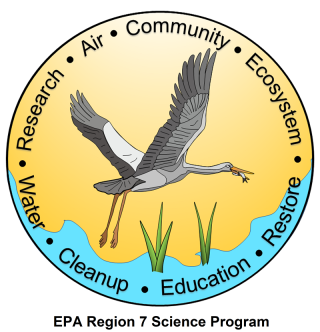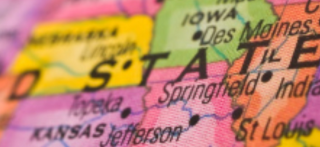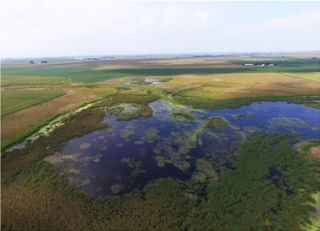Region 7 Science Program
What is the Regional Science Program?

The Regional Science Program links EPA's Office of Research and Development (ORD) with EPA's Regional Offices and emphasizes building networks and partnerships between Regional and ORD scientists, effectively transferring research results on high-priority regional science issues and conducting science outreach to the states, tribes, and communities.
On this page:
- Success Stories
- ORD Research and Small Business Funding Opportunities
- Upcoming ORD Events, Webinars and Training
- ORD Publications, Products, Resources and Toolkits
EPA Region 7’s Science Priorities are currently being updated to reflect Administration Priorities.
Success Stories
EPA Region 7/ORD Publication – Modeling Wetland Resources for Spring Migratory Waterbirds Under Different Agricultural Management Scenarios in the Iowa Portion of the Prairie Pothole Region
Constructed water quality wetlands, designed to accept tile drainage and surface runoff, are a promising solution for reducing surface water nutrient loading from agricultural systems. In addition to their water quality benefits, these systems may also offset losses of migratory waterbird stopover sites resulting from historical and future agricultural drainage modernization.
To assess this possibility, EPA Region 7 and the Office of Research and Development (ORD) developed spatially explicit habitat models informed with expert opinion to explore: 1) the potential of water quality wetlands to provide suitable stopover resources for waterbirds during spring migration, and 2) the extent these wetlands can offset likely losses of stopover resources due to drainage modernization. The study focused the modeling on the Iowa portion of the Prairie Pothole Region of North America as it was a historically important area within this vital region for waterbirds, but it has experienced widespread subsurface drainage.
Model results indicate that unmitigated drainage modernization is likely to have a large negative effect on spring migratory resources for dabbling ducks and shorebirds and minimal effect on diving ducks. Water quality wetland installations are likely to provide habitat for dabbling and diving ducks, but wetland installations are unlikely to completely offset habitat losses for dabbling ducks and shorebirds. Drainage modernization aside, the results indicate that water quality wetlands can address several environmental issues associated with agricultural expansion and intensification by improving water quality and providing wetland resources for waterbirds and other organisms. The next needed is field-scale research to ground-truth these results.
ORD Research and Small Business Funding Opportunities
EPA Research Grants – EPA’s Research Grants Program aims to stimulate and support scientific and engineering research that advances EPA’s mission to protect human health and the environment.
- Research Grant Topics (on left at link above): Air Research, Ecosystems Research, Health Research, Safer Chemicals Research, Sustainability Research, and Water Research
- Opens and closes: See “Open Funding Opportunities” at link above
- Award amounts: Vary by topic
If you are interested in receiving email Research Grants updates on research funding opportunities, sign up on EPA’s website.
Upcoming ORD Events, Webinars and Training
Tools and Resources Training Webinar Series – SALT Framework for Risk Communication
- Thursday, Oct. 2, 2025, from 2 to 3 p.m. CDT
- Register here
Tools and Resources Webinar Series – PFAS Destruction by a Hazardous Waste Incinerator
- Wednesday, Oct. 15, 2025, from 2 to 3 p.m. CDT
- Register here
ORD posts upcoming events, webinars and training several months in advance, which EPA's research staff is participating in, hosting, or supporting in other ways.
Check out the EPA Research Events page often for updates.
ORD Publications, Products, Resources and Toolkits
Strategic Research Action Plans, Fiscal Years 2023-2026 – ORD published the FY23-26 Strategic Research Action Plans (StRAPs) for these six National Research Programs (NRPs):
- Air and Energy (AE)
- Chemical Safety for Sustainability (CSS)
- Health and Environmental Risk Assessment (HERA)
- Homeland Security (HS)
- Safe and Sustainable Water Resources (SSWR)
- Sustainable and Healthy Communities (SHC)
Region 7 had 23 representatives (internal and external) working with ORD to incorporate our science priorities into the StRAP. This is the most involvement Region 7 ever had, and the Region hopes to continue that level of involvement in future StRAPs to address our science needs.
- EPA Tribal Research Resources
- EPA Science Inventory for Publications
- EPA Science Models and Research Tools (SMART)
- EPA Science Matters Newsletter
- EPA Resources to Support States
- EPA Participatory Science for Environmental Protection
- Updates to Regional Environmental Health Data Visualization Application (REHD) Tool
Story Map

Region 7 Science Program’s Research Projects
In this story map, you can learn about the Region’s collaborative research projects that address environmental and health concerns. Extensive details and interactive maps about the 40-plus projects are in six categories: Water, Air, Cleanup and Remediation, Tool/Method Development, Contaminants of Concern, and SBIR/P3/STAR.

